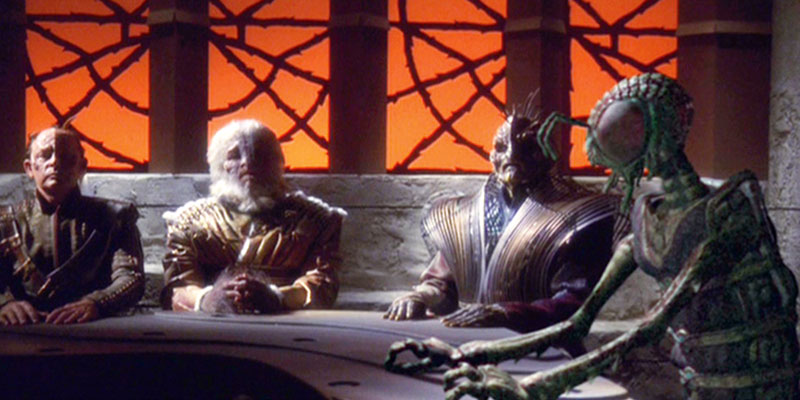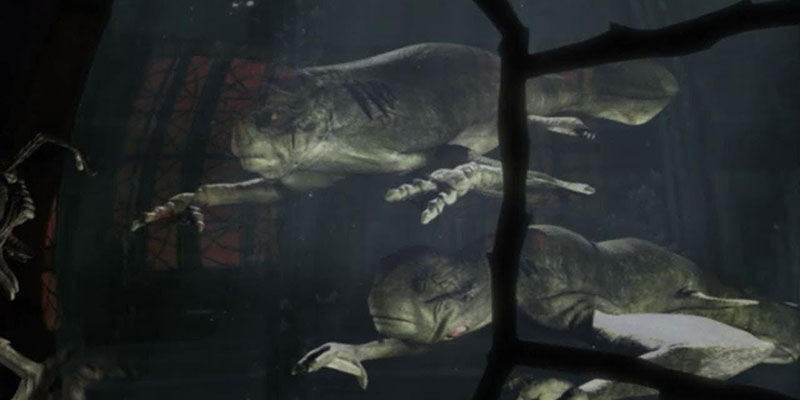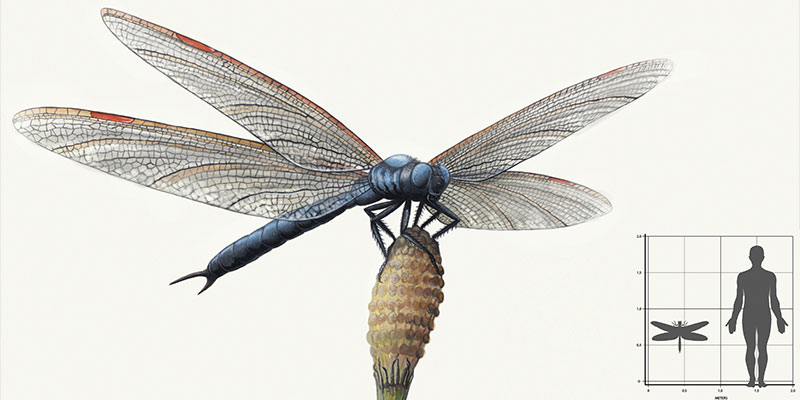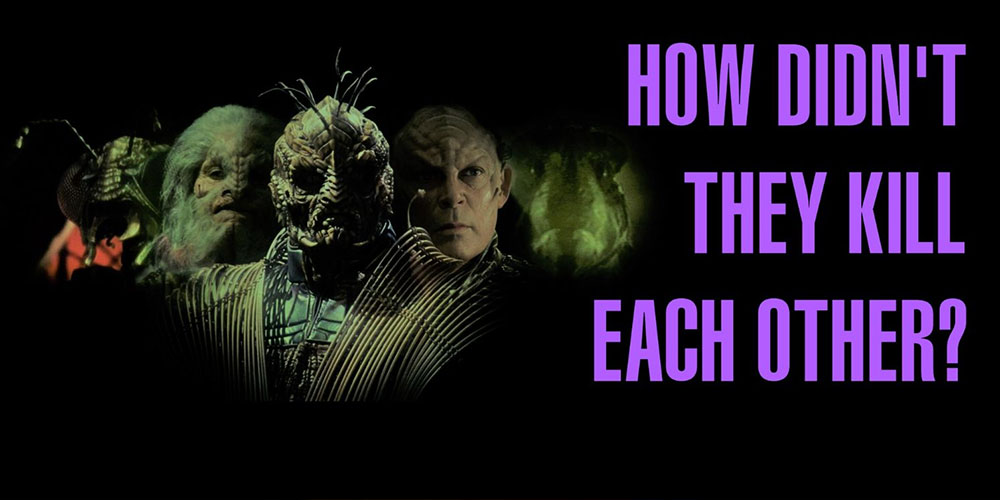Hey guys, Tyler here. So, in doing research for my Alien Worlds review, I became fascinated with a lot of the information I was gathering, and it rekindled my interest in palaeontology. As I learned more about the history of evolution on this planet, I thought, what about the evolution of different Star Trek races?
The alien civilization I want to focus on today is the Xindi. Featured in season 3 of Enterprise, the Xindi—acting as a sort of stand-in for al-Qaeda—consist of five different extant and one extinct sentient species who share a homeworld. This is not the only example of more than one intelligent species sharing a planet—the Andorians and the Aenar (technically a subspecies), the Menk and the Valakians, the Kelpiens and the Ba’ul—but when they were introduced, it was a rather novel idea for a Trek villain. What I want to explore is how these six distinct Xindi species—the Arboreals, Aquatics, Avians, Insectoids, Primates, and Reptilians—could have realistically evolved alongside each other.
One of the first places we can look towards is the human evolutionary tree—the genus Homo is home to a multitude of now-extinct species that lived alongside us for hundreds of thousands of years. The first known member of the genus to appear was probably Homo habilis in East Africa around 2 million years ago. Homo erectus speciated very soon after and spread throughout Africa and Eurasia, with Homo sapiens in Africa and Homo neanderthalensis in Eurasia speciating around 300,000 years ago. While these are the most prominent, there are other species such as Homo Denisova and many other unidentified hominins.

All of these human species used stone tools, and we have evidence of culture and interbreeding between Homo sapiens and various hominid species. But all of these species were part of the same genus, and thus the same family, order, and so on. While the Xindi races are very closely genetically related—Enterprise claims they share 99.5% of their DNA—in taxonomical terms, it makes sense that their common ancestor would be much older than the common ancestor of the Homo genus.
We know from “The Chase” that an ancient humanoid race seeded their genetic code across the galaxy 4.5 billion years ago, giving rise to many Star Trek races. This is essentially just a glorified form of panspermia; they may have even used the Mycelial Network to achieve this goal. We also find out in the Voyager episode “Distant Origin” that an intelligent race evolved from Earth hadrosaurs millions of years before humans showed up.
So, what we’re looking at is a situation where different animal species on Xindus evolved intelligence as a means to improve their survival. Trek does often play fast and loose with the established rules of Darwinian selection, but using evolutionary science as a basis, how could this come to be? This would be the equivalent of humans, birds, dolphins, octopi, and raccoons evolving intelligence simultaneously.
While all of the above-listed animals besides humans have some heightened level of intelligence compared to most species and have made tools, the main reason they haven’t developed civilization is that they lack the requisite cooperation. An octopus is very smart, but it hasn’t developed language or other sufficient methods to pass its knowledge along to its peers and its offspring. It would probably take millions of years for other animals to achieve human-level civilization if they do at all.

But on Xindus, things were obviously different. From a Darwinian perspective, there must have been some environmental, selective pressures that encouraged these six different species to develop equal intelligence—sapience, to borrow a term from The Original Series. Each of the Xindi species appears to have originated from a different environment—the jungle, the ocean, you name it. They may not all be predators, but they must have dominated their respective biomes. That’s my theory, at least.
Enterprise also tells us that Xindus was very geologically active—in fact, unstable. So perhaps this geologic activity is what encouraged natural selection pressures to favour intelligence as a means of survival. Overcoming climate change is, indeed, one of the key factors in what helps a species survive—and it’s likely one of the reasons the Neanderthals died out.
One thing that I would be remiss if I didn’t mention is that, unlike our early hominid cousins, sapient beings evolving from insects, aquatic species, and other animals different from primates would be subject to much different selective pressures. Humans and other apes evolved the way they did—bipedally, with forward-facing eyes and opposable thumbs—because it was advantageous in the ancient jungles, and later the safari, of Eastern and Southern Africa.
But there’s a reason we haven’t seen insects get very large since the late Cretaceous Period. Millions of years ago, the concentration of oxygen in Earth’s atmosphere was much higher than it is today. Scientists believe this may have been one of the things that contributed to animals, including the dinosaurs, growing so big. It’s possible that Xindus had a higher oxygen concentration, but without knowing too much about its climate and geography, it’s hard to tell if this would have been a major selective pressure to influence the evolution of Insectoids in a way that’s similar to the Prawns from District 9.
Some have suggested that the different Xindi races are the result of genetic engineering, one of the most intense forms of artificial selection. The fact that these races share 99.5% of their DNA seems to point to an evolutionary lineage that’s much different from what we’re familiar with on Earth—for example, there may have been more horizontal gene transfer and transfer of retroviruses in various populations. But I think the genetic engineering argument is not as compelling, as I think it’s more interesting both story-wise and scientifically that the Xindi evolved together on the same planet.

As for when their common ancestor lived, that’s also hard to tell, although I would imagine it’s much more than just a few million years. Could the Reptilians have been an ancestor of the mammalian Primates and Arboreals? My money is on probably not, but the fact that each of these species shares similar characteristics—including their characteristic forehead ridges pointing to a common ancestry—means even if they evolved in different biomes, they would have still been closely linked in the tree of life just as humans and other animals on Earth share a common heritage.
So, we have six distinct races, each filling a particular niche—just like their non-sapient animal counterparts would in any ecosystem. It’s natural to think that the Xindi might have conflicted with each other, but eventually, they’d need to cooperate to overcome the stresses on their home planet as we see in the show. We don’t know if they all developed technology at the same time—it’s not impossible for an aquatic species to create advanced tools, though smelting is a different problem…but while it might not have happened often in the galaxy, the galaxy is a big, big place.
This is probably why we don’t see many races like the Xindi. I do think it would be interesting to see more planets with multiple intelligent species, and Enterprise and Discovery were both good at this. Incorporating more 21st-century science is always a positive development, I think. As for six species on one planet—there’s a reason it’s incredibly rare.
This is admittedly speculative, but I think incorporating what we know from Darwinian natural selection is a useful guiding force for uncovering some of these answers. The Xindi evolved alongside each other like members of the Homo genus, but their common ancestor is probably older than Australopithecus. Combine that with a more biodiverse and ever-changing environment, and you have a rare but fascinating example of parallel evolution.
Thank you all for watching! I definitely want to hear your thoughts in the comments. If you enjoy content like this, becoming a patron at patreon.com/orangeriver is a great way to support me.
Watch The Latest Video By Orange River Media Below
Don’t forget to subscribe, and I’ll see you next time! Live long and prosper.
You can find Orange River Media at the links below
- YouTube: https://www.youtube.com/orangeriver
- Twitter: https://www.twitter.com/orangerivernw
- Instagram: https://www.instagram.com/orangeriver.nw
- Facebook: https://www.facebook.com/orangerivernw
- Patreon: https://www.patreon.com/orangeriver












